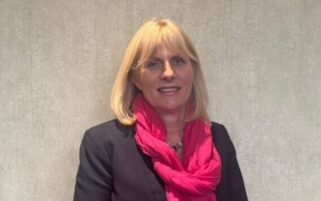Caroline Kerby
Managing Partner
Brentfield Medical Centre, Northwest London
Joint Lead
NHS Alliance Practice Managers’ Network
Caroline has worked in primary care for more than 20 years. She is the director of management for Harness Care Cooperative, a not-for-profit GP provider company. Caroline is a commissioning lead and sits on the council of the Brent Federation of Practice-Based Commissioners. Her passion is tackling health inequalities and the development of the primary care workforce with the clinician manager partnership at the heart of care delivery
Many practices are now finding the benefits from much closer working with their patients. I well remember starting a patient participation group (PPG) at my previous practice in 1994, with the honour of being the first to do so in Barnet.
Colleagues were aghast and could not quite come to terms with what we were doing. The simple answer was we were reassuring worried patients that our recent move into fundholding would not mean that elderly and vulnerable patients would be removed as they would be “too expensive” to care for, as some feared.
We held an open meeting in the local school hall on the warmest night of the summer that year, and 150 patients attended to listen and ask questions. We finished the evening with a much clearer understanding of our patients’ worries and a band of dedicated patients who formed our PPG.
We met regularly and our committee produced a wonderful newsletter, which they delivered to a large number of patients. They also hosted quarterly open meetings with an educational focus, such as ‘living with dementia’. They wanted to be independent and not be a drain on the practice, and so undertook minor fundraising activities. The practice supported the group with an annual grant and paid for the membership of the National Association of Patient Participation (NAPP).
Neither the family health service authority (FHSA) nor the newly forming primary care groups could see the relevance of supporting our little band to spread the word. Despite their dedication, our patient group never managed to become truly representative of the practice population and therefore the views merely reflected the membership of retired professionals who believed in giving something back to the community.
Fast-track 16 years and we find the Department of Health (DH) enabling patient participation through a directed enhanced service (DES), and 49% of practices now have existing PPGs. Guess you can’t keep a good idea down.
New DES challenge
So, is everything in the patient participation garden rosy and how is this translating into the new world of clinical commissioning? Speaking to the zealots, things are not moving fast enough or are not empowering enough. Speaking to the late adopters, we have to manage this process and be careful not to hand too much power to patients who are already too demanding.
As with all bell curves, the majority of practices are in the middle and the structure of the DES is helpful in terms of taking a broader view. A lot of work was undertaken during the DH project on responsive general practice, led by Dr Mike Warbuton, whose recent article in Management in Practice provided helpful insight into the benefits of virtual patient groups.(1)
The requirement in the DES to establish a representative patient group has been a challenge for many practices in terms of how indepth the analysis of the patient population needs to be. Is a breakdown of ethnicity and age sufficient?
A group of patients whose views are often missed are the housebound and the most chronically sick. The learning disability enhanced service has provided a more structured approach to the care of patients, but have we used this opportunity to find ways to ensure the inclusion of patients’ and carers’ views? How do we engage with hard-to-reach groups such as teenagers, the long-term unemployed and patients with severe and enduring mental health problems?
Increasing numbers of practices are connecting to their patient population by the use of virtual focus groups as an effective way to reach out in a quick and cost-effective manner to patients with long-term conditions, carers, people with young children and working people who cannot attend meetings on Tuesday afternoons.
The DES requires the practice to develop a structure to gain views of patients. The structure for each practice will depend upon their patient demographic but also on how patient engagement evolves.
Survey insight
A key aspect of the enhanced service is to carry out localised surveys. These can include a combination of the more traditional once-a-year survey form, or the practice could highlight specific questions that patients could provide feedback on and carry out more rapid, focused questioning.
Many practices have found that the outcomes of local surveys provide a really useful insight into the real issues affecting patients and can be used to agree priorities. For example, in one practice lengths of wait in the practice were identified as an issue and a change was put in place. In order to gauge if the change was making a discernable improvement for patients, for a two-week period every patient was asked to complete a short survey stating how long they waited and if they felt this was an improvement.
Often, patients can provide really useful insights that are hard to spot by staff working in the practice. ‘Discovery interviews’, in which practitioners aim to explore and learn from the impact of illness on people’s everyday lives, are also a rich source
of feedback.
I have two colleagues who visit each other’s practices every couple of years and interview patients waiting to be seen. This qualitative information adds depth to the quantitative data a survey provides.
Benefits of involvement
Many practices are finding that the expectations of the patient representative group are very often less demanding than feared. This is especially true once the survey findings are discussed and there is a shared understanding of limitations and barriers.
A lot of patient representative groups are working with practices not only to communicate the agreed actions but also to encourage patients to work with the practice – such as arriving on time, cancelling appointments and self-caring.
Work being done by some practices with patients with long-term conditions has also paid dividends, as patients have been able to support other patients. Examples include instances where a longstanding diabetic patient is prepared to speak to a newly diagnosed diabetic or a parent of an asthmatic child is happy to speak with a new parent to share practical experience of managing their child’s condition.
Communication
Once the practice has agreed its action plan with its patient representative group, the DES requires it to advertise both the plan and the monitoring of improvements. A large number of practices do this via their website and email distribution lists.
It was very clear from the DH work on responsiveness through the Horizon project that practices often had things in place that patients were requesting but somehow the message was not getting through to patients.
As the NHS moves towards a potentially more competitive environment, practices need to think about having a communication strategy that aims to reach out to patients and the local community. The days of posters in the waiting room have gone and, while onsite information is important, we live in a global 24/7 world with a harder-to-please consumer population.
As part of the NHS family, general practice has the enviable connection to the NHS brand, which is still respected and cherished. As primary care trusts in England disappear, clinical commissioning groups (CCGs) will have to pick up the reins of representing the local NHS, working for patients and communities.
The investment in the patient DES is a real opportunity to build strong links to these communities and will build a bottom-up infrastructure to ensure the voices of real patients are heard alongside frontline clinicians, both of which will be essential if clinical commissioning is to reach its true potential.
Reference
- Warburton M. Virtual PPGs – how to get started. Management in Practice 2011;26:60-2.



